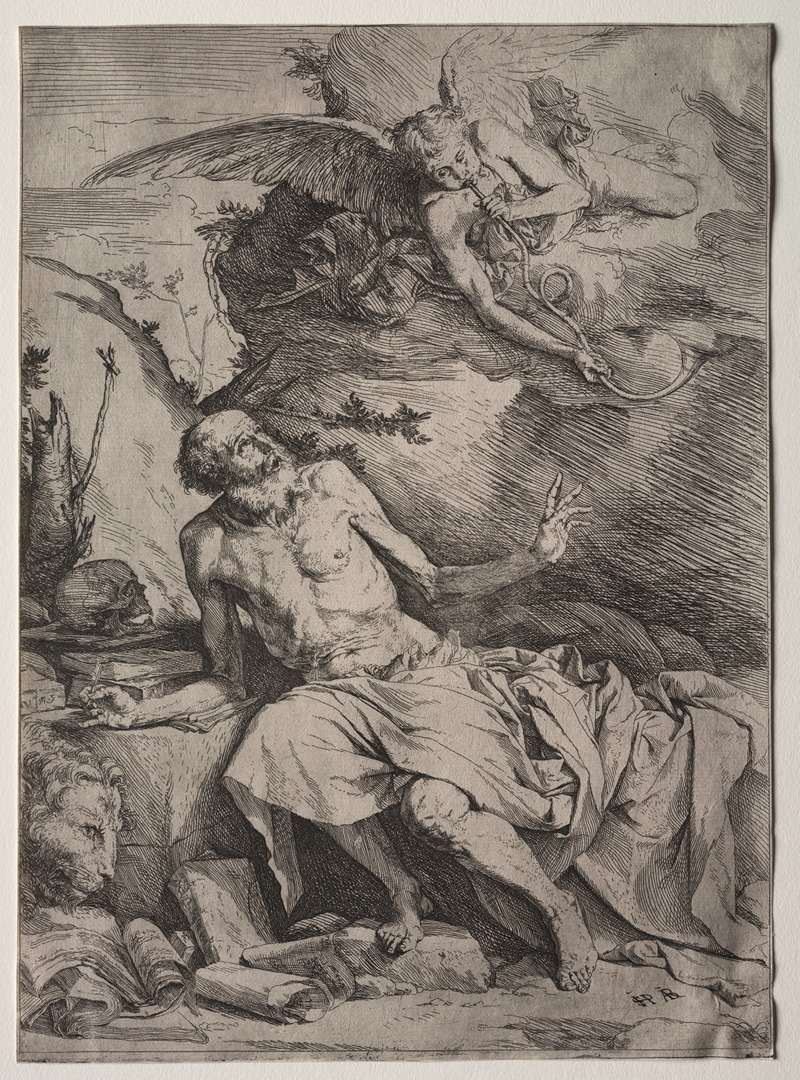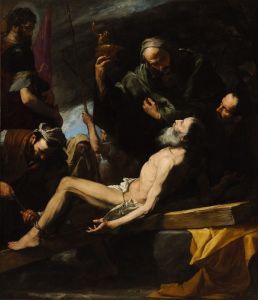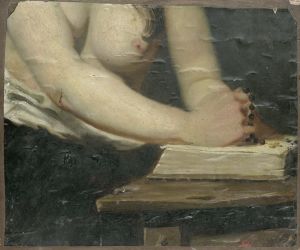
Saint Jerome
A hand-painted replica of Jusepe de Ribera’s masterpiece Saint Jerome, meticulously crafted by professional artists to capture the true essence of the original. Each piece is created with museum-quality canvas and rare mineral pigments, carefully painted by experienced artists with delicate brushstrokes and rich, layered colors to perfectly recreate the texture of the original artwork. Unlike machine-printed reproductions, this hand-painted version brings the painting to life, infused with the artist’s emotions and skill in every stroke. Whether for personal collection or home decoration, it instantly elevates the artistic atmosphere of any space.
Saint Jerome is a painting by the Spanish artist Jusepe de Ribera, created in the early 17th century. Ribera, who was also known as "Lo Spagnoletto" due to his Spanish origins, was a prominent figure in the Baroque movement and spent much of his career in Italy, particularly in Naples. His work is characterized by its dramatic use of light and shadow, a technique known as chiaroscuro, and a focus on realistic, often gritty depictions of religious and mythological subjects.
The painting depicts Saint Jerome, a Christian scholar and translator of the Bible, who is often portrayed in art as a penitent hermit. In Ribera's rendition, Saint Jerome is shown in a moment of deep contemplation or study, which is a common theme in depictions of this saint. He is typically represented with attributes such as a skull, a Bible, or a lion, which are symbolic of his scholarly pursuits and his time spent in the desert.
Ribera's Saint Jerome is notable for its intense realism and the emotional depth conveyed through the saint's expression and posture. The artist's use of chiaroscuro enhances the dramatic effect, with light falling on the saint's face and upper body, creating a stark contrast with the dark background. This technique not only highlights the physical details of the figure but also serves to emphasize the spiritual and intellectual intensity of Saint Jerome's character.
The painting reflects Ribera's mastery of texture and detail, evident in the rendering of the saint's skin, beard, and the folds of his robe. Ribera's attention to anatomical accuracy and his ability to capture the subtleties of human expression are hallmarks of his style and contribute to the lifelike quality of the work.
Ribera's choice to depict Saint Jerome in this manner aligns with the Counter-Reformation emphasis on personal piety and the importance of individual devotion and study. The painting would have resonated with contemporary audiences, who were encouraged to emulate the saint's dedication to faith and scholarship.
Saint Jerome by Jusepe de Ribera is housed in various collections, with several versions and similar compositions attributed to the artist. Ribera's works, including his depictions of Saint Jerome, are held in high regard for their technical skill and their ability to convey complex emotional and spiritual themes. His influence extended beyond his lifetime, impacting both Spanish and Italian art, and he remains a significant figure in the study of Baroque painting.
Overall, Ribera's Saint Jerome exemplifies the artist's ability to blend realism with dramatic intensity, creating a powerful image that captures the essence of the saint's scholarly and ascetic life. The painting continues to be appreciated for its artistic merit and its insight into the religious and cultural context of the 17th century.

















